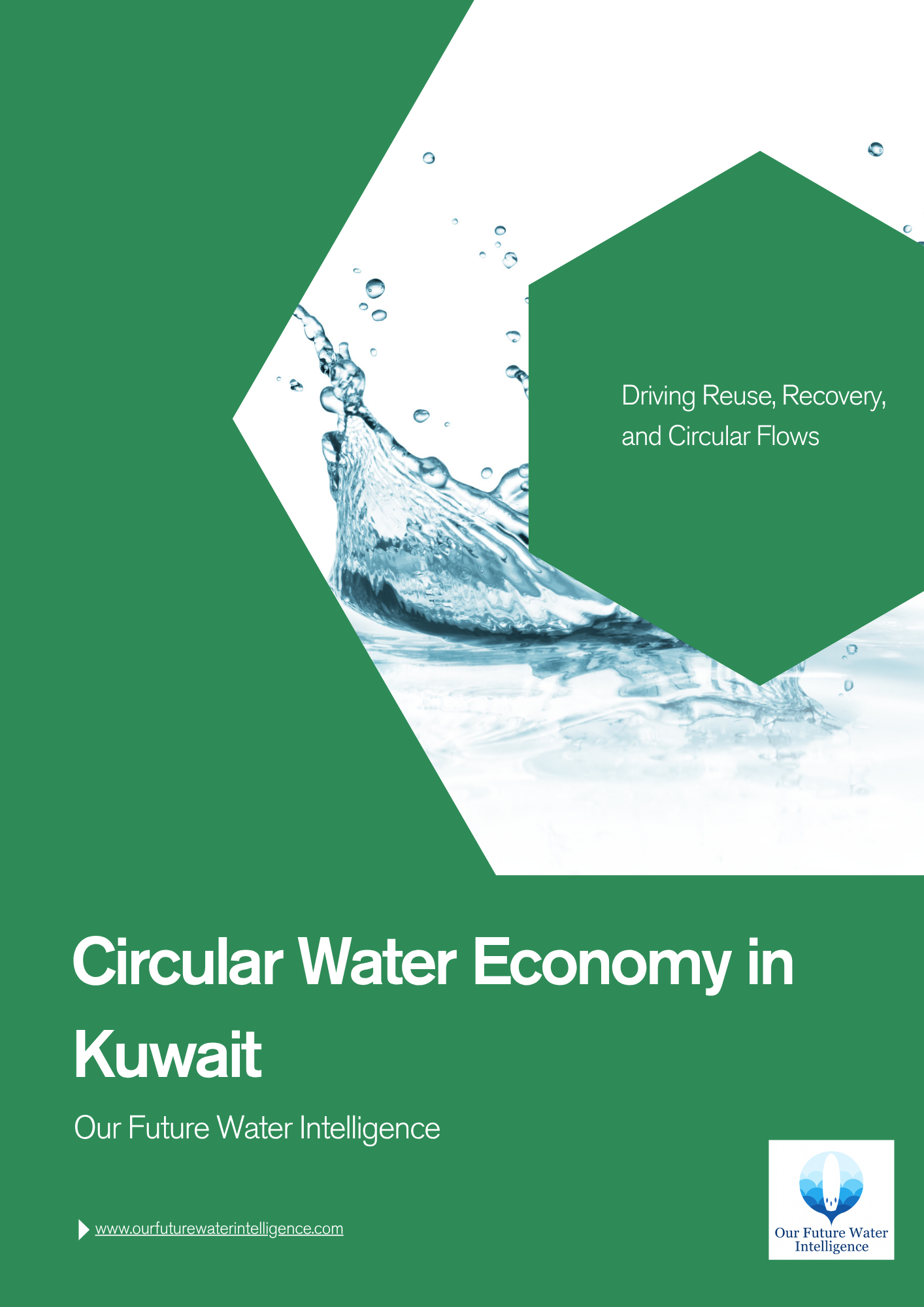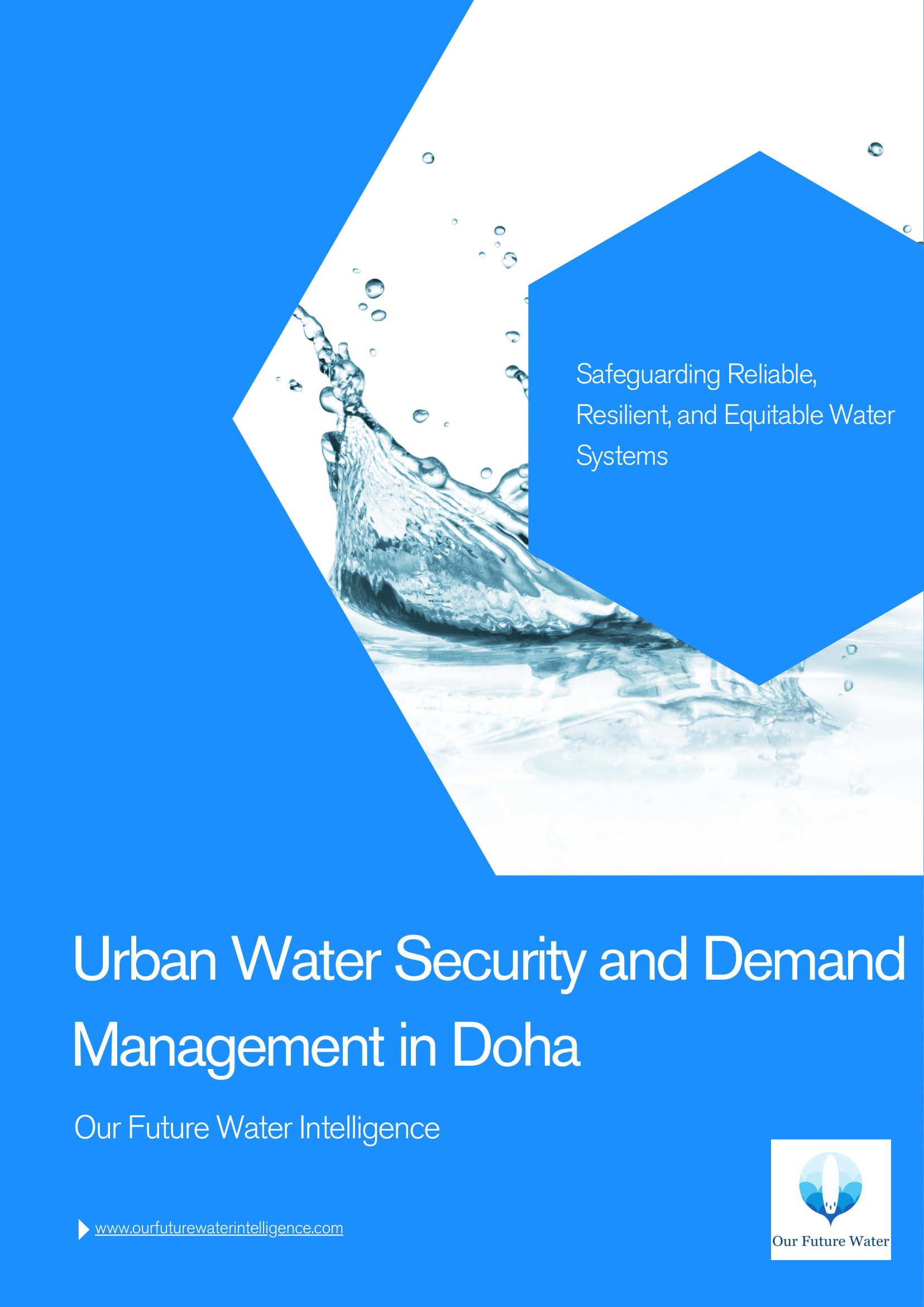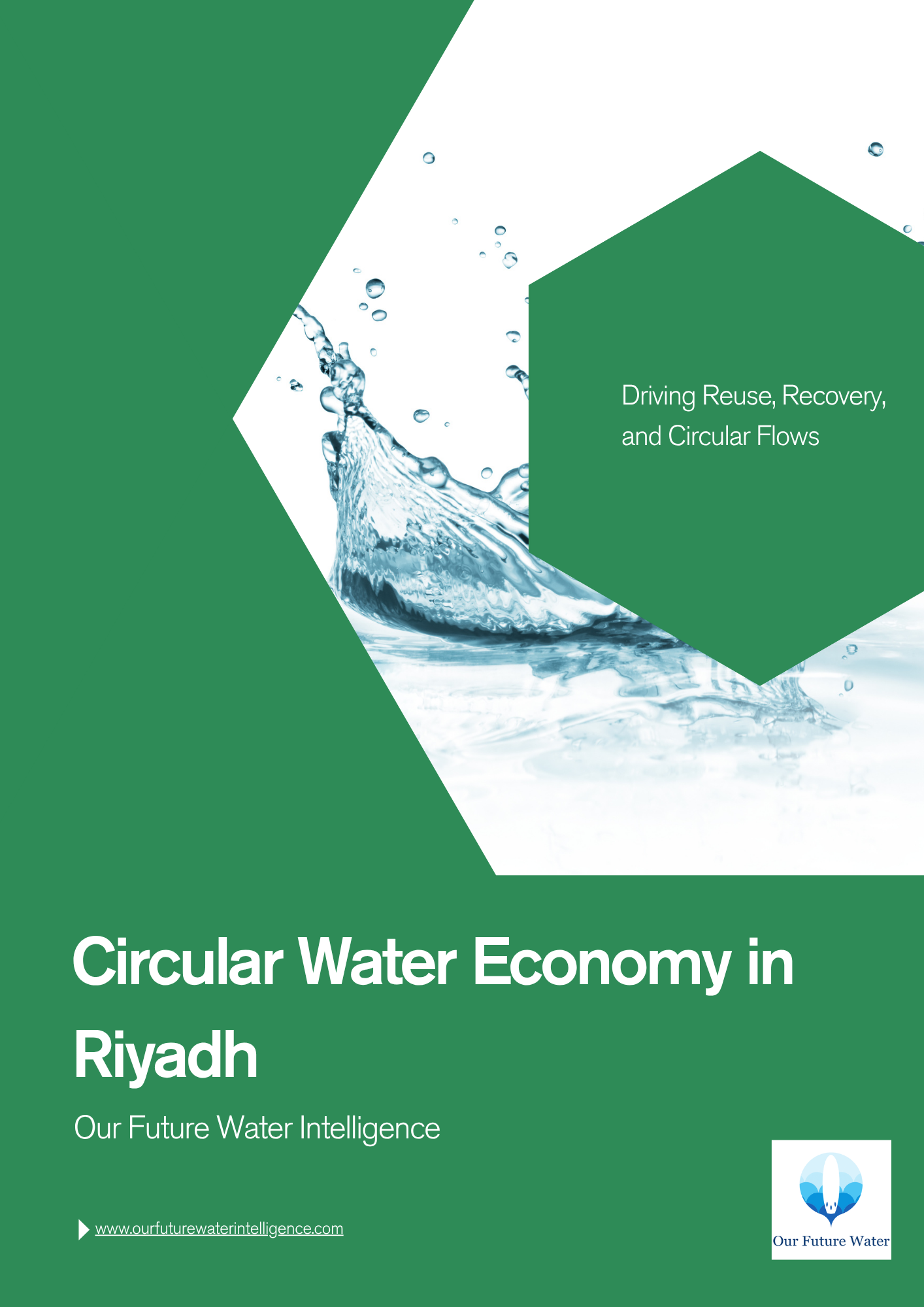New from Our Future Water Intelligence
Our Future Water Intelligence has released its latest publication, Circular Water Economy in Kuwait, authored by Robert C. Brears—Founder of Our Future Water Intelligence and a global authority on water security, resource efficiency, and sustainability governance.
Published as Kuwait accelerates its transition toward a circular, resource-efficient economy under Kuwait Vision 2035 and the National Adaptation Plan (2019–2030), the report offers a comprehensive, data-driven examination of how one of the world’s most water-stressed nations is rethinking water management to strengthen long-term sustainability, fiscal balance, and climate resilience.
Read the full report: Circular Water Economy in Kuwait
Key Findings
Water Stress and Dependency
Kuwait ranks first globally for water stress, with renewable freshwater resources below 5 m³ per capita. Desalination supplies 49% of national demand and treated sewage effluent (TSE) contributes 29%. Per-capita consumption averages 447 L/person/day, influenced by subsidies that cover 95% of production costs.
Efficiency and Demand Management
Under a nationwide Smart Meter System, Kuwait is deploying 200,000 smart water meters to reduce Non-Revenue Water (NRW), which is approaching 50% largely due to meter inaccuracies. Proposed block-tariff reforms (NAP) aim to curb excess use while safeguarding equity through baseline allocations.
Wastewater Recycling and Reuse
The Sulaibiya Water Reclamation Plant—the world’s largest membrane-based facility—treats ~60% of national wastewater for high-quality reuse in irrigation and landscaping. Discharge to the sea has fallen from ~65% (2000) to <30%, strengthening marine protection and reuse efficiency.
Resource Recovery and Industrial Symbiosis
Brine from reverse osmosis (RO) is reused with the Kuwait Oil Company (KOC) for enhanced oil recovery, illustrating circular industrial flows. Nutrient recycling from tertiary effluent supports landscaping and agriculture, advancing the 5Rs—Reduce, Reuse, Recycle, Recover, Restore.
Digital Modernization
The Ministry of Electricity, Water and Renewable Energy (MEW) has digitized 97% of customer services, improving transparency and operations. In one fiscal year, MEW recovered over KWD 500 million via digital billing and data-driven monitoring.
Stormwater and Climate Adaptation
Projects such as the South al-Mutlaa Mega Project (15 infiltration systems handling >200 million liters of runoff) and the South Abdullah Al-Mubarak Reservoir (53,000 m³) turn flood management into groundwater recharge. Expanding green belts—covering >51% of protected terrestrial areas—boosts resilience to heat, dust, and salinity intrusion.
Energy–Water Nexus
Desalination is energy-intensive and tightly coupled to oil. Kuwait is investing in next-generation technologies, including a USD 5.5 million partnership with MIT to advance energy-efficient RO—aligning water security with decarbonization objectives.
Expert Insight
“Kuwait’s embrace of circular water economy principles shows how innovation, governance reform, and digital transformation can convert scarcity into opportunity,” said Robert C. Brears, Founder of Our Future Water Intelligence. “By embedding reuse, recovery, and restoration into national systems, Kuwait provides a blueprint for circular water management in hyper-arid regions.”
What’s Inside the Report
- Detailed analysis of Kuwait’s water balance, supply mix, and infrastructure performance
- Evaluation of the 5Rs framework and progress under each pillar
- Assessment of smart metering, digital governance, and tariff reforms
- Case studies of stormwater infiltration and green infrastructure projects
- Strategic recommendations for scaling reuse, recovery, and resilience
Why This Report Matters
As the world’s most water-stressed nation, Kuwait’s progress in circular water management offers practical lessons for GCC countries and beyond. Circular Water Economy in Kuwait provides actionable intelligence for policymakers, utilities, and investors seeking to reduce subsidies, strengthen efficiency, and accelerate the transition to a low-carbon, resource-secure future.
This authoritative report positions Kuwait as a regional leader in water circularity and climate resilience, showing how innovation and strategic foresight can transform vulnerability into sustainable advantage.



